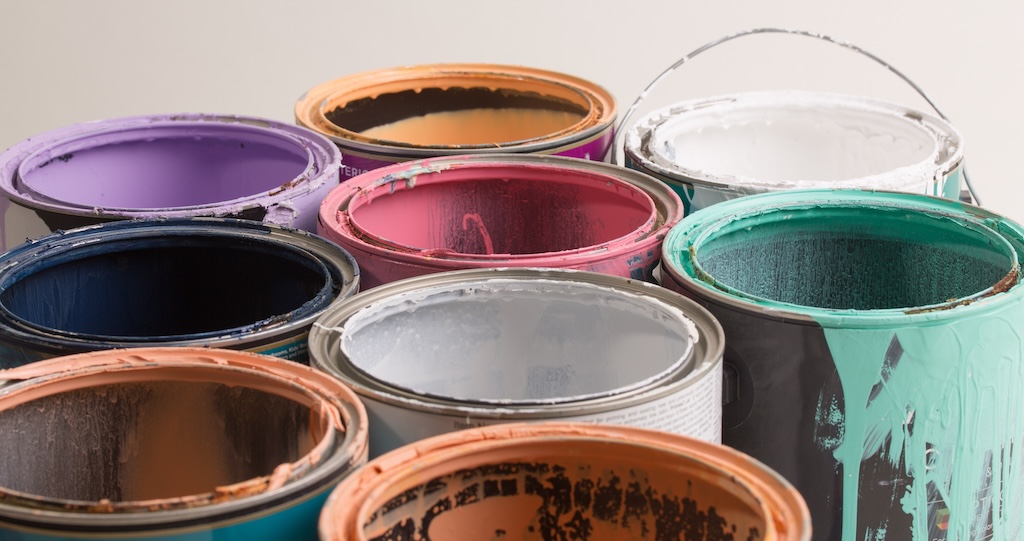In the world of home improvement, leftover paint is a common byproduct. While it’s easy to let these half-used cans collect dust in the garage, there are eco-friendly ways to recycle or repurpose them, reducing environmental waste. Paint contains chemicals that can be harmful if not disposed of properly, so it’s important to consider environmentally responsible options. This blog will explore various eco-friendly methods for recycling paint and how you can implement them, providing practical tips for homeowners to make a positive impact on the environment while decluttering their homes.
Donate Unused Paint
One of the best ways to recycle paint is to donate it. Many community organizations, schools, theaters, and non-profit groups often welcome donations of paint for their projects. This not only helps you declutter but also supports local community efforts, fostering collaboration and resource sharing to benefit those in need while minimizing waste. By donating unused paint, you can contribute to community projects and initiatives, promoting sustainability and social responsibility while giving back to your local community.
Repurpose for Art and Craft Projects
Leftover paint can be a great resource for art and craft enthusiasts. Water-based paints like latex are perfect for various craft projects. You can use them for furniture makeovers, decorative items, or even as part of mixed-media artwork. Encouraging creativity while recycling is a win-win, promoting sustainable practices while unleashing artistic expression. By repurposing leftover paint for art and craft projects, you can breathe new life into old materials, reducing waste and creating unique and personalized creations that reflect your style and creativity.
Use for Touch-Ups and Small Projects
Keep a small amount of leftover paint for future touch-ups. This is particularly useful for walls and surfaces that are prone to scuffs and marks. Additionally, you can use leftover paint for small projects like painting a piece of furniture, a door, or creating an accent wall. By utilizing every drop of paint, you not only minimize waste but also save money and time on future touch-up and renovation projects. Keeping leftover paint for touch-ups and small projects ensures that you have the right color on hand when needed, maintaining the appearance of your home and prolonging the lifespan of your paint job.
Paint Swaps
Organize or participate in a paint swap. This involves trading paint with neighbors or community members. Paint swaps can be a fun way to exchange colors and materials that would otherwise go unused, fostering a sense of community and camaraderie while promoting sustainable practices and resource sharing. By participating in paint swaps, you can find new colors for your projects while diverting paint from landfills and reducing waste. Organizing or attending paint swaps is a great way to connect with your community and support environmentally friendly practices.
Recycling Centers
Many cities and towns have recycling centers that accept leftover paint. These facilities often have the means to recycle or dispose of paint in an eco-friendly manner. Make sure to check your local regulations and requirements, as some centers may only accept certain types of paint. By utilizing local recycling resources, you can ensure that your leftover paint is disposed of responsibly and diverted from landfills. Recycling paint at designated centers ensures that it is handled and disposed of in an environmentally friendly manner, reducing its impact on the environment and promoting sustainability.
Paint Hardener for Disposal
If recycling is not an option, you can use a paint hardener to solidify the paint before disposal. Once the paint is hardened, it can be safely thrown away with regular trash in most areas. This method is particularly useful for small amounts of latex paint, providing a convenient and environmentally friendly solution for disposing of leftover paint. Using a paint hardener for disposal ensures that the paint is solidified and contained before being discarded, minimizing the risk of spills and environmental contamination.
Community Repaint Programs
Some communities have established repaint programs to address the issue of leftover paint. These programs collect usable leftover paint from individuals and businesses and redistribute it to those in need, such as low-income families or community groups undertaking renovation projects. Participating in these programs is a great way to ensure your leftover paint is put to good use, supporting local initiatives and promoting equitable access to resources while minimizing waste. By donating your excess paint to repaint programs, you can make a tangible difference in your community, helping to beautify spaces and improve the lives of those in need through the power of paint.
Manufacturer Take-Back Programs
Another eco-friendly option for disposing of leftover paint is to check if the manufacturer of your paint offers a take-back program. Some paint brands have initiatives in place to take back unused paint and recycle it, either by remaking it into new paint or using it for other purposes such as energy recovery. By participating in manufacturer take-back programs, you can contribute to a circular economy and reduce the environmental footprint of paint production and disposal. This proactive approach to paint disposal ensures that materials are recycled and reused, minimizing waste and conserving valuable resources while supporting environmentally responsible practices within the paint industry.
Creative Reuse
Get creative with paint reuse by exploring innovative ways to repurpose leftover paint. Old paint can be used for various purposes beyond its original intended use, such as undercoating or primer for other projects, or mixed to create new colors for artwork or wall murals. By thinking outside the box and embracing creativity, you can minimize waste and maximize the utility of leftover paint, promoting a more sustainable and resourceful approach to home improvement. Whether you’re an artist, DIY enthusiast, or homeowner, there are countless opportunities to repurpose leftover paint in inventive and imaginative ways, turning potential waste into valuable resources for creative expression and innovation.
Final Thoughts
Recycling paint is not just about being eco-friendly; it’s also about being resourceful and community-minded. By donating, repurposing, participating in swaps and recycling programs, or using paint hardeners for safe disposal, you can significantly reduce environmental waste and contribute to a more sustainable way of living. This holistic approach to managing leftover paint not only minimizes environmental impact but also fosters a culture of environmental stewardship and collaboration within communities. By taking proactive steps to responsibly manage leftover paint, we can all play a part in preserving the planet for future generations while beautifying our homes and communities in the process. For more eco-friendly home improvement tips, visit our website at sisupainting.com and explore our blog at sisupainting.com/blog.





No comment